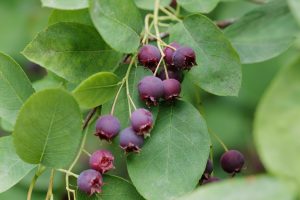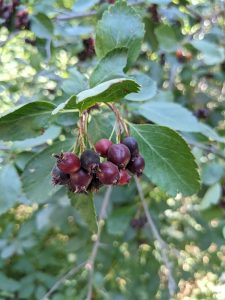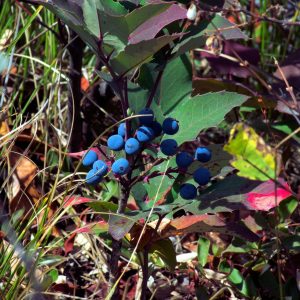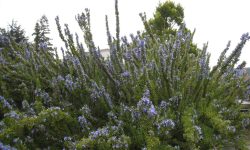Serviceberry Vs Huckleberry
When it comes to wild berries, the options seem endless, and two popular choices are serviceberries and huckleberries. These small, delicious fruits can be found in various regions and are known for their unique flavors and versatile uses. In this blog post, we’ll explore the differences and similarities between serviceberries and huckleberries, starting with an introduction to each type of berry. We’ll then delve into the characteristics and growing conditions of both, to provide a deeper understanding of their individual traits. Finally, we’ll compare the fruits of the serviceberry and huckleberry, including their taste, appearance, and culinary uses. Whether you’re a forager, a gardener, or simply a berry enthusiast, this post will help you appreciate the distinct qualities of these two beloved berries and perhaps even inspire you to try them for yourself. So, let’s get started by learning more about serviceberries and huckleberries.
Introduction to Serviceberry and Huckleberry
Serviceberries and Huckleberries are two delicious and nutritious fruits that are native to North America. These two fruits are often compared due to their similarities, but they have distinct characteristics and growing conditions. Understanding the basics of these two fruits can help you appreciate their unique qualities and make informed decisions when planting or foraging for them.
Serviceberries, also known as Saskatoon berries, are small, round fruits that grow on shrubs or small trees. They are known for their sweet flavor and are often used in jams, pies, and other desserts. Huckleberries, on the other hand, are small, round berries that grow on low bushes. They have a tart flavor and are commonly used in baking or eaten fresh.
Both Serviceberries and Huckleberries have specific growing conditions. Serviceberries thrive in well-drained, sandy soil and prefer full sun or partial shade. They are also relatively low-maintenance and can tolerate various climates. Huckleberries, on the other hand, prefer acidic, well-drained soil and thrive in shady, woodland environments. They are more finicky than Serviceberries and require specific conditions to thrive.
In conclusion, understanding the distinct characteristics and growing conditions of Serviceberries and Huckleberries is essential for anyone interested in growing or foraging for these fruits. By learning about their unique qualities, you can make informed decisions on how to cultivate or use these delicious fruits.
Characteristics and Growing Conditions of Serviceberry
Serviceberry trees, also known as Amelanchier, are small, deciduous trees that are native to North America. They are known for their beautiful white spring flowers, edible berries, and vibrant fall foliage. These trees can reach heights of 6 to 20 feet and have a spread of 4 to 15 feet. The oval-shaped leaves are green in spring and summer, turning to shades of yellow, orange, and red in the autumn months. Serviceberry trees also produce small, edible fruits that are similar in appearance to blueberries.
Serviceberry trees prefer full sun to partial shade and well-draining, acidic soil. They are relatively low-maintenance trees, making them a popular choice for home gardens and landscapes. These trees can tolerate a wide range of soil types, including loamy, sandy, and clay soils. They are also resistant to many pests and diseases, further adding to their appeal as a landscaping tree.
When planting Serviceberry trees, it is important to space them at least 6 to 10 feet apart to allow for proper growth and development. Regular watering and mulching can help to promote healthy root growth and overall tree health. Additionally, annual pruning can help to maintain the desired shape and size of the tree, as well as promote increased fruit production.
Overall, Serviceberry trees are a beautiful and versatile addition to any landscape. Their stunning spring flowers, edible berries, and vibrant fall foliage make them a popular choice for gardeners and homeowners looking to add visual interest and functionality to their outdoor spaces.
Characteristics and Growing Conditions of Huckleberry
Huckleberry plants are small to medium-sized deciduous shrubs that belong to the heath family. They are native to North America and are found in various regions, from the mountains to coastal areas. The plants typically grow to a height of 2 to 6 feet and have a spreading habit. Their bark is smooth and dark brown, and the leaves are alternately arranged along the stems. Huckleberry shrubs produce bell-shaped, pink or white flowers in spring, which are attractive to bees and other pollinators.
In terms of growing conditions, huckleberry plants prefer acidic, well-drained soil. They thrive in full sun to partial shade, and they are tolerant of various moisture levels, from dry to moist. They are also hardy in USDA zones 5 to 8. When it comes to care and maintenance, huckleberries benefit from regular pruning to remove dead or diseased wood and to shape the plants. They also benefit from a layer of mulch to help retain moisture and suppress weeds.
Huckleberries produce delicious, round fruits that can be enjoyed fresh, dried, or in jams and baked goods. The fruits are high in antioxidants, vitamins, and minerals, making them not only tasty but also nutritious. They are often foraged in the wild but can also be cultivated in home gardens. When grown in the appropriate conditions and given proper care, huckleberry plants can be productive and rewarding additions to any landscape.
In conclusion, huckleberry plants are attractive, versatile shrubs with ornamental and culinary value. They are relatively easy to grow and maintain, making them well-suited to home gardens and small-scale cultivation. Whether you’re looking for a decorative shrub, a source of delicious fruits, or both, huckleberries are a great choice that will delight both you and wildlife in your garden.
Comparison of Serviceberry and Huckleberry Fruits
Serviceberries and huckleberries are both delicious and nutritious fruits that can be found in the wild and cultivated in home gardens. While they are both distinct in their own right, they share some similarities as well.
One of the main differences between the two fruits is their size. Serviceberries are typically larger and rounder, resembling blueberries, while huckleberries are smaller and more oval-shaped.
Another difference lies in their taste. Serviceberries have a sweet, somewhat nutty flavor, similar to a cross between a blueberry and an almond, whereas huckleberries have a more tart and intense flavor, often described as a combination of blueberries and blackberries.
In terms of growing conditions, serviceberries thrive in a variety of soils and can tolerate partial shade, while huckleberries prefer acidic soil and full sun. Both fruits are high in antioxidants and can be enjoyed fresh or used in a wide range of culinary applications, from jams and pies to smoothies and salads.
Frequently Asked Questions
What is Serviceberry?
Serviceberry is a small, deciduous tree or shrub that belongs to the genus Amelanchier. It produces edible berries and is known for its beautiful blossoms in the spring.
What is Huckleberry?
Huckleberry is a small, wild shrub that belongs to the genus Gaylussacia or Vaccinium. It also produces edible berries and is often found in mountainous regions.
What are the characteristics of Serviceberry?
Serviceberry typically has white blossoms in the spring, and its berries are red to purple in color. It prefers well-drained soil and full sun to partial shade.
What are the growing conditions of Serviceberry?
Serviceberry thrives in various soil types, including loamy and sandy soils. It requires regular watering, especially during the first few years of growth.
What are the characteristics of Huckleberry?
Huckleberry has small, bell-shaped white or pink blossoms, and its berries are typically dark blue to black in color. It prefers acidic soil and partial shade.
What are the growing conditions of Huckleberry?
Huckleberry prefers acidic, well-drained soil and can tolerate shady conditions. It is often found in forests or woodland areas.
How do the fruits of Serviceberry and Huckleberry compare?
Both Serviceberry and Huckleberry produce edible berries that are often used in jams, pies, and other culinary creations. However, the flavor and nutritional content of the berries differ between the two.







